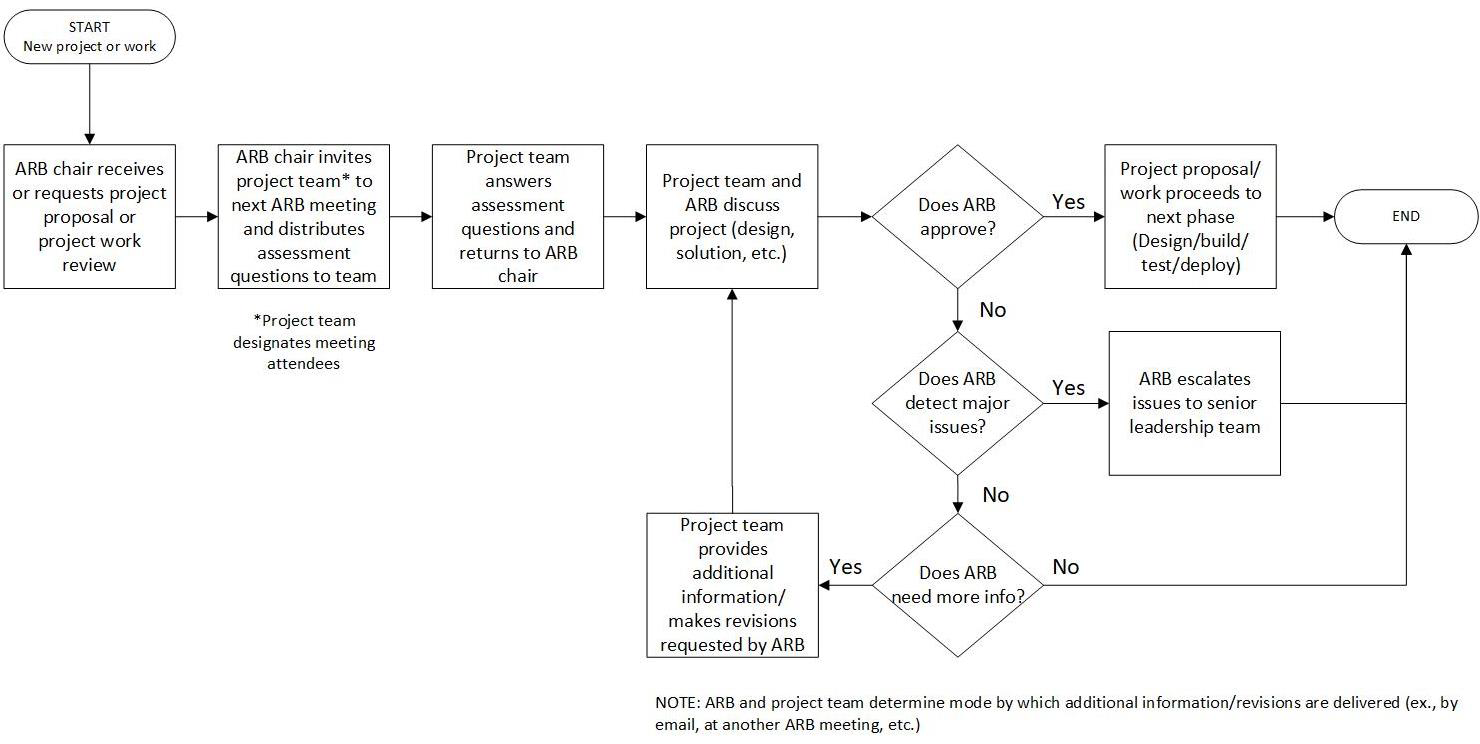Architecture Review Board (ARB)
Purpose
The Architecture Review Board (ARB) serves as a governance body ensuring IT initiatives align with UT Health Science Center IT infrastructure and information security standards as well as UT Health Science Center IT goals, strategies, and objectives in compliance with applicable government and University regulations.
Goals
- Improve the quality of ITS products
- Plan, design, and implement an efficient, effective, and comprehensive architecture for UT Health Science Center IT infrastructure and applications
- Establish architecture baseline and develop and maintain target architecture for UT Health Science Center IT
- Establish and promote architecture best practices
- Create architecture roadmaps • Lead architecture review process
- Identify new technologies for ITS
- Support an “Agile Mindset”
Responsibilities
- Decision-making:
- Establish architecture roadmaps
- Establish architectural and design principles and best practices
- Evaluate solution designs per best practices; if design is rejected, provide recommendations for improvement
- Solicit and consider input from other governing bodies during decision-making process
- Document rationale for decision in meeting minutes or other documentation
- Provide input to decisions made by other governing bodies
- Escalation:
- Escalate decisions beyond their authority to Senior Leadership Team (SLT)
- Recommend a course of action and provide supporting analyses (when decision is escalated to another body)
- Communication:
- Communicate decisions to SLT and other key stakeholders in accordance with communications plan
- Keep SLT informed of major architecture decisions
- Ongoing activities:
- Create architecture strategy and roadmap
- Define architecture principles and best practices
- Conduct technical feasibility studies
- Facilitate collaboration across areas to exploit IT synergies and avoid duplication
- Identify innovation in IT that can help the business (e.g., new technologies)
- Ad-hoc activities:
- Create temporary teams to address specific tasks as needed
Scope
- All major projects will require an ARB review to support initial system/solution planning and design.
- For technically complex projects, ARB reviews may be scheduled periodically for support and reviews.
- Any project can request support from the ARB at any phase, from concept to delivery.
- The ARB reserves the right to call for a review of any project at any time.
Membership
- Vikki Massey (chair), Interim Chief Information Officer
Vice Chancellor - Chris Stachowski, Infrastructure/Cybersecurity, Enterprise Architecture
- Willie Simon, Solutions Delivery, Clinical IT
- Greg Baboolal, Solutions Delivery, ITS Data Reporting and Analytics
- Billy Barnett, Infrastructure/Cybersecurity, SysOps
- Ammar Ammar, Chief Information Security Officer
Chief Technology Officer - Dustin Fehnel, Cybersecurity/Compliance, Identity and Access Management
Meetings
- Meet at least once per month to review project proposals and work reviews
- Frequency may be increased to meet need during critical time periods
- Ad-hoc meetings may be scheduled at any time as needed
- Agenda items:
- Evaluate conceptual and in-progress solution designs
- Define IT architecture best practices
- Update architectural and design standards
- Review outstanding action items
- Have open discussion
- For the evaluation of conceptual and in-progress solution designs:
- The ARB will be responsible for inviting project teams to ARB meetings and providing applicable assessment criteria and forms. Project teams will be given adequate time to prepare assessment materials prior to the meeting.
- The ARB may stipulate that assessment materials be submitted to the ARB prior to the meeting.
- The following evaluation process will be followed:
- The project team will summarize the project goals/objectives, stakeholders, and any work that has been completed.
- The ARB will ask questions as needed of the submitted assessment materials as well as information shared during the meeting by the project team.
- The ARB will do one of three things:
- Approve the project to proceed, reserving the right to request additional review(s) in the future
- Table a decision pending additional information or requested revisions either from the project team or ARB members.
- Deny the project to proceed in its current state and escalate the decision to the SLT.
- The ARB may provide its decision during the meeting or request more time for consideration outside the meeting.
- Where more information/revisions are requested, the ARB will determine how the project team should submit these materials. This could range from an email follow-up for a simple modification up to having to present the modifications at a future ARB meeting.
- The ARB reserves the right to request additional information from other subject matter experts outside the project team or ARB as needed.
- The ARB will be responsible for the following:
- A method for intaking project proposals/project work review requests from project teams
- A method for initiating an ARB request for a review
- Evaluation forms to collect project information
- Documentation of meeting minutes and ARB decisions
- Communication of meeting schedules, agendas, meeting minutes, decisions, and other information as needed to the appropriate stakeholders by the ARB chair or designee

